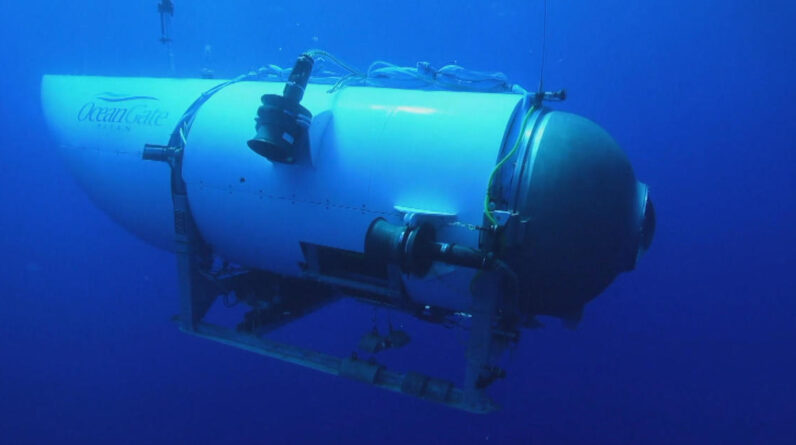
The creator of the missing the Titanic submersibleOceanGate, was the target of complaints in 2018 filed by a former employee about the safety of the ship’s hull.
According to court documents reviewed by CBS MoneyWatch, OceanGate fired employee David Lochridge in 2018 after he raised concerns about the submersible’s safety. The company sued him that same year, alleging that Lochridge had breached his employment contract by disclosing confidential information to the Occupational Safety and Health Administration when he filed a complaint with the agency.
In response to OceanGate’s lawsuit, Lochridge alleged in a 2018 court filing that he had been wrongfully fired and that his actions were intended to ensure the safety of passengers on the submarine, named Titan. The Titan is now the focus of a massive search in the North Atlantic after it disappeared during a dive on the wreckage of the Titanic with five passengers on board.
Click here to view related media.
click to enlarge
In his complaint, filed in the U.S. District Court for the Western District of Washington, Lochridge alleged that he raised concerns about the safety of the Titan with OceanGate and advised the company to conduct further testing of the ship’s hull . Lochridge said he disagreed with his employer about the best way to test the safety of diving and objected to OceanGate’s decision to conduct dives without “non-destructive testing to demonstrate their integrity”.
Non-destructive testing is a type of analysis used on materials to determine their integrity and reliability.
“Paying passengers would not be aware of and would not be informed of this experimental design, the lack of non-destructive testing of the hull or that hazardous flammable materials were being used inside the submersible,” Lochridge said. archiving he stated
The document added that Lochridge believed the company could “subject passengers to potential extreme danger in an experimental submersible”.
Separately, a trade group in 2018 sent a letter to OceanGate expressing reservations about the safety of the submarine. seconds in the New York Times. The letter, from the Society for Marine Technology’s manned underwater vehicle committee, said the group was concerned that OceanGate’s “experimental” approach could have potentially “catastrophic” results that could affect its industry.
OceanGate did not immediately respond to a request for comment. In a statement to CBS News, Lochridge’s attorney said he had no comment on the allegations. “We pray for everyone’s safe return,” the lawyer said.
Security checks
Lochridge, a submarine pilot and underwater inspector, said in a legal filing that he was “trained to recognize flaws and points of failure in underwater equipment.” His job at OceanGate involved “ensuring the safety of all crew and customers during submersible and surface operations,” according to the document.
The Titan relied on carbon fiber for a hull that carried passengers to depths of 4,000 meters, a depth that Lochridge claimed in the court filing had never been reached in a submarine built from carbon fiber. According to his claim, he learned that the ship was built to withstand a certified pressure of 1,300 meters, even though OceanGate planned to take passengers to 4,000 meters.
Lochridge also expressed concern that the company planned for the diver to rely on an acoustic monitoring system to detect whether the helmet was breaking or about to fail. That wouldn’t provide much help in an emergency, Lochridge said in the presentation, because acoustic analysis would only alert people to impending trouble, “often milliseconds before an implosion.”
Lochridge stated that the submersible needed additional types of testing to ensure its hull could withstand the rigors of deep-water exploration. “Non-destructive testing was instrumental in detecting these potentially existing defects to ensure a robust and safe product for the safety of passengers and crew,” their legal filing states.
Instead of addressing those concerns, OceanGate “immediately fired” Lochridge, according to the court document. The company allegedly gave him “approximately 10 minutes to immediately clear his desk and leave the premises.”
Trending news
[ad_2]
Source link





